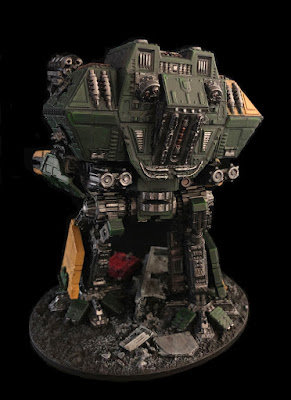Hi All,
Here we have the pugnacious Alastair Grimsby and his mastiff 'Titus', minding their business, tending their flock of sheep, while The Big Bad Wolf (or simply 'Bigby', for those who have read the brilliant 'Fables' series) lopes in for a quick spot of lunch.
Both Alastair and Titus have a great, 'What the f*ck. Again?!' look about them. Alastair, I believe, is an Artizan Design figure, but I can't for the life of me remember where I got the mastiff (pity, as he's a marvellous beast). At first I had them based separately but found that they looked much better side-by-side. I have given Alastair a natty quasi-Burberry car coat, probably a bit too stylish for the Scottish moors, but that's just how he rolls. His original shotgun was a double barrel jobbie, but it was so terribly warped that I removed the barrel and gave him a classically simple Mossberg 500.
Bigby is from Heresy Miniatures. This pose is probably my favourite of any werewolf figures that I've seen. I just love the animation of his feral, loping run. Just an awesome mini. His deeply sculpted fur required a little filling at the joins, but not a real problem. As to painting, I kept it relatively simple and gave him a mottled grey timberwolf look.
The herd of sheep are from 1st Corps. As soon as I saw these online I had to pick one up when we were at Crisis last year. While the overall look is great I have to say that I'm a little disappointed with the amount of bubbles and miscast bits. I corrected a couple things, but finally gave up and just made do. Still, a great looking and versatile tabletop scatter piece that can be used for games ranging thousands of years.
Thanks for dropping in and have a great week everyone!







































